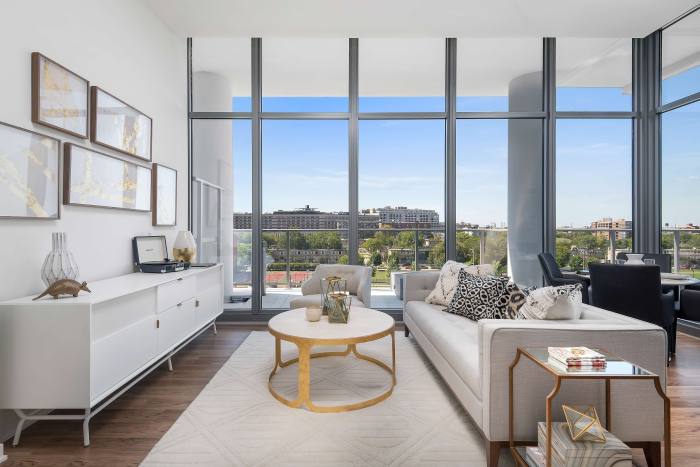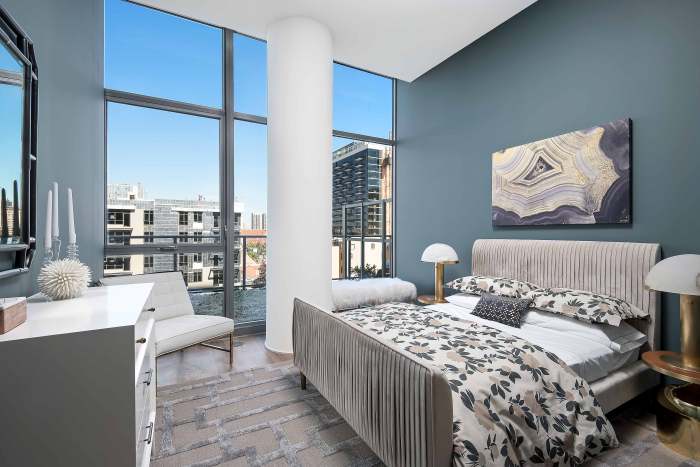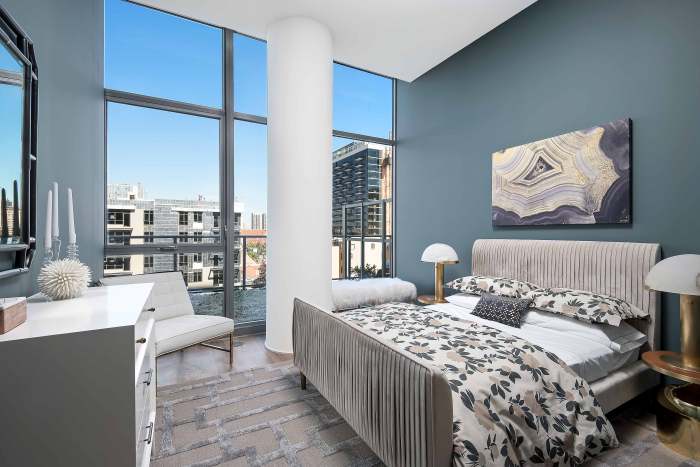Apartment house interior design presents a unique set of challenges and opportunities. Unlike single-family homes, apartment spaces must cater to the needs of multiple residents while maintaining a cohesive and appealing aesthetic. The design process requires careful consideration of space planning, functionality, style, and budget to create comfortable and inviting living environments for all occupants.
This guide delves into the key aspects of apartment house interior design, exploring practical solutions for maximizing space, enhancing natural light, and incorporating stylish elements that reflect the unique character of each unit. From selecting durable materials and furniture to creating a sense of home, we’ll provide insights and inspiration for transforming apartment houses into desirable and functional living spaces.
Style and Aesthetics

Creating a visually appealing and cohesive design aesthetic is crucial for apartment houses, where multiple units share a common space. This section explores popular interior design styles and provides insights on achieving a unified look while allowing for individual unit customization.
Popular Interior Design Styles, Apartment house interior design
Popular interior design styles offer a framework for creating aesthetically pleasing spaces. Each style features distinct characteristics in terms of color palettes, materials, and furniture choices. Here are some common styles used in apartment houses:
- Modern: Characterized by clean lines, minimal ornamentation, and a focus on functionality. Modern design often incorporates neutral color palettes with pops of bright accents, natural materials like wood and stone, and sleek, contemporary furniture.
- Contemporary: Similar to modern but with a greater emphasis on current trends and a more eclectic approach. Contemporary design often features bold colors, geometric patterns, and a mix of materials like metal, glass, and wood. Furniture is often comfortable and stylish, with a focus on functionality and comfort.
- Minimalist: Strives for simplicity and functionality, with a focus on essential elements. Minimalist design typically uses a limited color palette, often featuring white or gray as the dominant color. Furniture is simple and functional, and decorative elements are kept to a minimum.
Apartment house interior design often involves maximizing space and functionality, especially in smaller units. Similar principles apply to designing a home, even one with a larger footprint like a 850 sq ft house interior design. The key is to create a sense of flow and openness, utilizing clever storage solutions and strategic furniture placement to ensure a comfortable and visually appealing environment.
- Traditional: Emphasizes classic and timeless elements, often featuring ornate details, rich colors, and comfortable furniture. Traditional design often uses materials like wood, leather, and textiles, and incorporates elements of history and culture.
Creating a Cohesive Design Aesthetic
Maintaining a cohesive design aesthetic across multiple units is essential for creating a unified and welcoming atmosphere. This can be achieved by:
- Establishing a Common Design Language: This involves choosing a specific design style and adhering to its key characteristics. For example, if the chosen style is modern, all units should incorporate clean lines, neutral color palettes, and contemporary furniture.
- Utilizing a Consistent Color Palette: A consistent color palette can create a sense of unity throughout the building. This can involve using the same base colors for all units, while allowing for individual variations in accent colors. For instance, all units could have a neutral base color like white or gray, with each unit incorporating a different accent color like blue, green, or yellow.
- Selecting Shared Materials: Using common materials throughout the building can create a sense of continuity. For example, all units could feature hardwood floors, granite countertops, or stainless steel appliances. This shared element helps tie the units together and creates a cohesive look.
- Offering Design Guidelines: Providing design guidelines to tenants can help ensure that all units adhere to the overall aesthetic. These guidelines can specify acceptable color palettes, materials, and furniture styles. This approach allows for individual customization while maintaining a cohesive look.
Examples of Color Palettes, Materials, and Furniture Choices
Here are some examples of color palettes, materials, and furniture choices that align with different interior design styles:
Modern Design
- Color Palette: Neutral colors like white, gray, black, and beige, with pops of bright accents like blue, yellow, or green.
- Materials: Natural materials like wood, stone, and leather, as well as sleek materials like metal and glass.
- Furniture: Sleek, contemporary furniture with clean lines and minimal ornamentation.
Examples include leather sofas, glass coffee tables, and chrome chairs.
Contemporary Design
- Color Palette: Bold colors like red, orange, yellow, and green, often used in combination with neutral colors.
- Materials: A mix of materials like metal, glass, wood, and fabric.
- Furniture: Comfortable and stylish furniture with a focus on functionality and comfort.
Examples include plush sofas, oversized chairs, and unique accent pieces.
Minimalist Design
- Color Palette: A limited color palette, often featuring white or gray as the dominant color.
- Materials: Simple materials like wood, metal, and concrete.
- Furniture: Simple and functional furniture with minimal ornamentation. Examples include sleek sofas, minimalist chairs, and simple storage units.
Traditional Design
- Color Palette: Rich colors like burgundy, navy, green, and gold.
- Materials: Classic materials like wood, leather, and textiles.
- Furniture: Comfortable and traditional furniture with ornate details. Examples include plush armchairs, antique tables, and ornate mirrors.
Summary

Designing apartment houses is a balancing act between creating individual spaces that feel personal and welcoming while maintaining a cohesive and appealing aesthetic throughout the building. By understanding the principles of space planning, functionality, style, and budget, designers can create living spaces that are both functional and aesthetically pleasing.
Whether it’s maximizing natural light, incorporating innovative storage solutions, or selecting durable and stylish materials, the goal is to create a sense of home for every resident.
Questions and Answers: Apartment House Interior Design
What are some common challenges in apartment house interior design?
Limited space, varying resident needs, budget constraints, and maintaining a cohesive aesthetic across multiple units are some common challenges.
How can I create a sense of privacy in apartment units?
Use sound-absorbing materials, strategically place furniture, and incorporate room dividers to enhance privacy.
What are some tips for maximizing storage space in apartments?
Utilize vertical space with shelves and cabinets, incorporate multi-functional furniture, and use storage solutions that fit seamlessly into the design.




